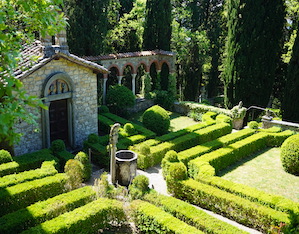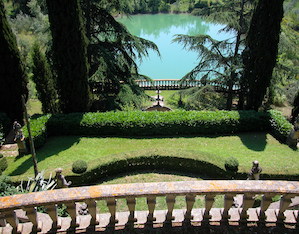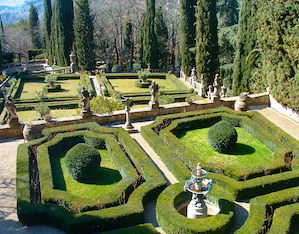Florence Airport “A: Vespucci”: with the shuttle bus in 30′ you can reach Santa Maria Novella Station, then follow the directions described in the section “By bus”.
Located north of Fiesole Hill, the Bosco di Fontelucente is a succession of “parterres”, decorative elements and picturesque pathways, in what is a veritable repertoire of a 20th-century “Italian-style” garden.
From 1936, after he inherited it from his Piedmontese industrialist father Angelo Peyron, Paolo Peyron commissioned these formal gardens and a romantically-inspired park below a neo-medieval villa on a spur between two valleys studded with olive trees. The garden suffered considerable damage during the Second World War, but then Peyron had it restored, adding a considerable number of serially-produced, 20th-century statues in Vicenza stone, 29 fountains fed by a spring further up the hill, and countless replicas of urns, putti, columns, obelisks, concrete baskets and sundry decor. To the south of the villa, the upper terrace is divided into four parterres delimited by double boxwood hedges, leading down to another parterre and, after that, a fishpond. To the east, another formal garden frames a neo-medieval chapel, and then a monumental staircase leading up to the “Piano della Musica” that overlooks a lake on the edge of an agricultural estate. Cypresses and cedars frame the boxwood parterre gardens, expressing a stereotypically “Italian-style” approach popular from the late 19th century onwards. In 1998, Paolo Peyron donated the villa to the Ente Cassa di Risparmio di Firenze Foundation.




